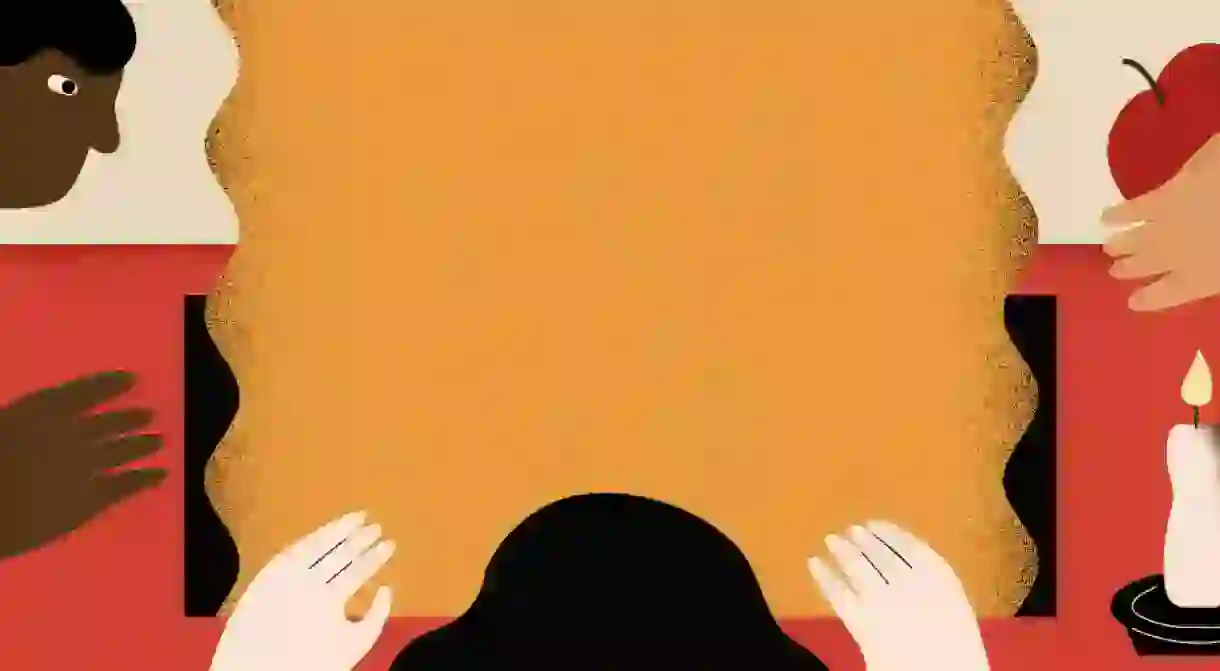A Very Creepy History Of The Ouija Board

A bit of harmless fun or a direct line to malevolent spirits? The history of the ouija board is creepier and even more intriguing than you imagined.
In 19th Century America, spiritualism took off in a big way. This new religion stated that the death of the physical body doesn’t spell the end for the person’s spirit, which simply transitions to another plane of existence — an otherworldly realm mostly undetected by the living, but bridgeable using specific techniques and rituals.

In the 1800s life expectancy was below 50 years, and people were drawn by the promise of continued communication with their dead loved ones. Spiritualism also had its fair share of famous figureheads that popularized the movement, like The Fox sisters — two kids from upstate New York who claimed they could commune with the deceased. Their routine — the girls would ask a question and the spirits would supposedly answer by knocking on the walls or furniture — became a sensation and sparked a trend for parlor room seances across the country.
A savvy businessman named Charles Kennard noticed this occult craze and set out to invent a kind of “talking table,” which would make it quicker and easier to reach the spirit world. Once he had developed a prototype Kennard asked the spirits what his invention should be called and the planchette spelled out “Ouija.” When he inquired what the bizarre word meant, they replied “good luck.” As in, you’re going to need it.
The Ouija board was first marketed as a toy in the 1890s with no explanation of how it worked, just that it could answer questions about the past, present of future with uncanny accuracy, and that it would provide a link “between the known and unknown, the material and immaterial.” The mystery fueled demand, and perhaps sewed a seed that channeling ghosts might not be an entirely harmless activity. Aided by horror movies and countless urban legends, this sense of foreboding associated with the Ouija board has intensified over the years.

Of all the spooky stories, one in particular might give you the chills. William Fuld was an early stakeholder and eventual owner of the company which produced Ouija boards. In 1927 he was up on the roof of his new factory supervising the installation of a flagpole, when the railing he was leaning against broke and he plummeted three stories to the ground below. While being rushed to the hospital, a fractured rib pierced his heart, killing him instantly. It later emerged that the Ouija board spirits were the ones who instructed him to build the factory.
So there you have it — the ouija’s creepy backstory in brief. Was it enough to make you want to leave it in the box this Halloween?













